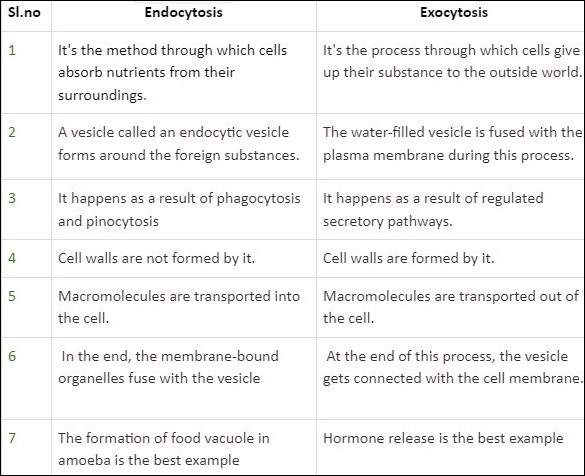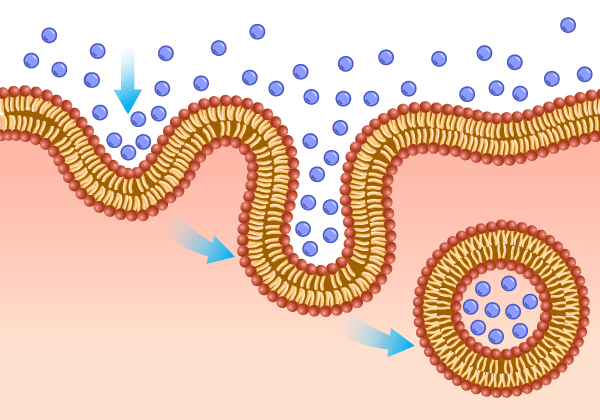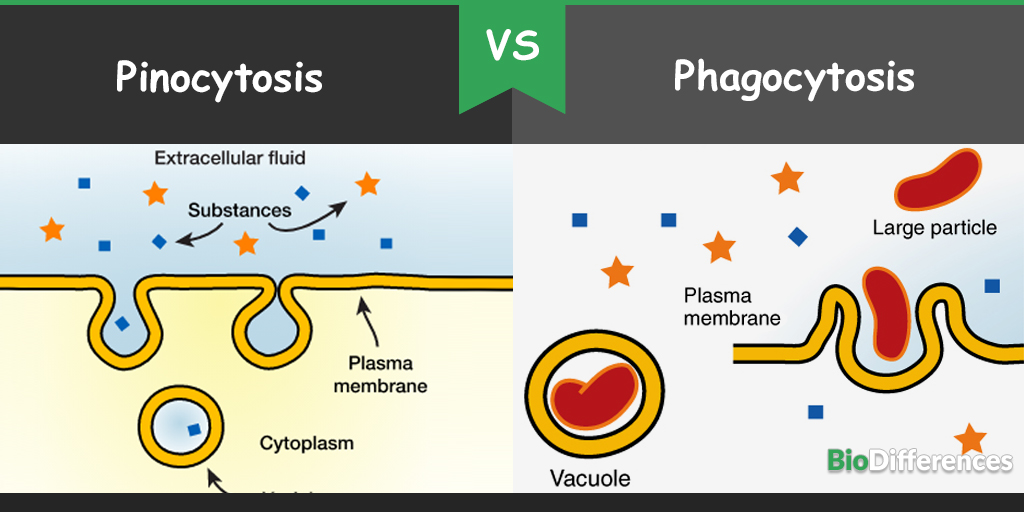Exocytosis and Endocytosis Study Guide
Introduction:
Endocytosis and exocytosis are the mechanisms by which cells transport items that are too big to pass through the lipid bilayer of the cell membrane directly into or out of the cell. Exocytosis and endocytosis are two processes that allow large molecules, bacteria, and waste materials to pass through the cell membrane.
Endocytosis and Exocytosis
Endocytosis:
Endocytosis is a transport mechanism that allows materials from the cell’s exterior side to enter the cell, such as large molecules, cell components, hormones, and impulses. Because it needs the expenditure of energy, endocytosis is active transport. When the target particle reaches the plasma membrane, it forms a pinching pocket around it, enclosing it in a newly generated intracellular vesicle composed of a plasma membrane.
Types of endocytosis
Phagocytosis and pinocytosis are the two types of endocytosis.
Phagocytosis
- The process through which phagocytes, or live cells, ingest or consume other cells or particles is known as phagocytosis.
- A phagocyte can be a single-celled creature, such as an amoeba, or a body cell, such as a white blood cell. Some species, such as amoebas and sponges, have a way of feeding called phagocytosis.
- Phagocytosis is primarily a defensive reaction to infection and foreign material invasion (antigens). in higher animals.
Pinocytosis
- Cell drinking, also known as pinocytosis, is widespread in plant and animal cells.
- During pinocytosis, the cell takes in the components it needs to operate from the extracellular fluid. Two examples are water and fertilizers.
- Pinocytosis with receptor-mediated endocytosis is a kind of pinocytosis. Macromolecules bind to receptors on the cell’s plasma membrane surface during receptor-mediated endocytosis.
- Receptor-mediated endocytosis is exemplified by cholesterol absorption.
Purpose of Endocytosis
- Endocytosis serves several purposes, including:
- Getting nutrients into your body for cellular growth.
- When the immune system detects bacteria or other pathogens, immune cells engulf them and destroy them.
- To avoid causing damage to neighboring cells, when cells stop performing properly, they must be carefully disposed of away.
- To kill these cells, endocytosis is utilized.
Exocytosis:
Exocytosis is the transfer of materials from the inside of the cell to the outside of the cell. It is an active transport since it necessitates the expenditure of energy. Membrane-bound vesicles carrying biological molecules are transported across the cell membrane as transportation agents.
Vesicles are attached to the cell membrane and spew out their contents. This procedure is necessary for removing excess water from the cell, transferring chemical signals between cells, and reassembling the cell membrane.
Golgi apparatus, endosomes, and presynaptic neurons produce the vesicles used in transportation. Constitutive exocytosis, controlled exocytosis, and lysosome-mediated exocytosis are three methods that can be used to do this. The vesicles containing the cell’s waste products are delivered to the cell membrane, which subsequently binds the vesicles to themselves, causing the vascular contents to be released outside the cell.
Purpose of Exocytosis
Exocytosis serves the following purposes:
- Cells create waste or toxins that must be removed to maintain homeostasis. For example, during aerobic respiration, cells produce the waste products carbon dioxide and water. Carbon dioxide and water are removed from these cells during exocytosis.
- Signaling molecules generated by cells include hormones and neurotransmitters. They are transported to other cells after escaping from the cell via exocytosis.
- Endocytosis is when cells acquire items from outside the cell by producing vesicles from the plasma membrane containing lipids and proteins. When certain exocytotic vesicles join with the cellular membrane, these components are replenished.
During endocytosis and exocytosis, transport occurs via the semipermeable plasma membrane. Aside from that, during endocytosis and endocytosis cells have a variety of transport mechanisms. The bulk transport mechanisms used by eukaryotes are endocytosis and exocytosis. They are known as active transport processes because they require energy. Hence both endocytosis and endocytosis have active transport processes and require energy.
Difference between endocytosis and exocytosis
The below table shows how are endocytosis and exocytosis different:
Conclusion:
- Endocytosis is the process of capturing a substance or particle from outside the cell by engulfing it with the cell membrane and bringing it into the cell.
- The process of exocytosis involves vesicles fusing with plasma membranes and releasing their contents.
- Endocytosis and exocytosis are both active transport processes.
- Inactive transport, molecules, and ions are pumped across membranes against a gradient of concentration via an energy-consuming process.
FAQs:
1. What are endocytosis and exocytosis, both examples of?
In the cytoplasm, macromolecules or large particles are moved across the plasma membrane by vesicles. Endocytosis and exocytosis are examples of vesicle transport. They are both active, energy-consuming processes.
2. What is the function of exocytosis?
Cells create waste or toxins that must be removed in order to maintain homeostasis. For example, during aerobic respiration, cells produce the waste products carbon dioxide and water, and carbon dioxide and water are removed from these cells during exocytosis.
3. How does endocytosis differ from exocytosis?
The major distinction between endocytosis and exocytosis is that endocytosis relates to bringing matter into the cell from the outside, whereas exocytosis refers to the material being exported out of the Golgi complex via secretory vesicles into the outside world.
We hope you enjoyed studying this lesson and learned something cool about Exocytosis and Endocytosis! Join our Discord community to get any questions you may have answered and to engage with other students just like you! Don’t forget to download our App to experience our fun, VR classrooms – we promise, it makes studying much more fun! 😎
Sources:
- Exocytosis and Endocytosis. https://flexbooks.ck12.org/cbook/ck-12-biology-flexbook-2.0/section/2.16/primary/lesson/exocytosis-and-endocytosis-bio/. Accessed 7 Dec, 2021.
- Exocytosis and Endocytosis. https://bio.libretexts.org/Bookshelves/Introductory_and_General_Biology/Book%3A_Introductory_Biology_(CK-12)/02%3A_Cell_Biology/2.17%3A_Exocytosis_and_Endocytosis. Accessed 7 Dec, 2021.
- Endocytosis and Exocytosis: Differences and Similarities. https://www.technologynetworks.com/immunology/articles/endocytosis-and-exocytosis-differences-and-similarities-334059. Accessed 7 Dec, 2021.


